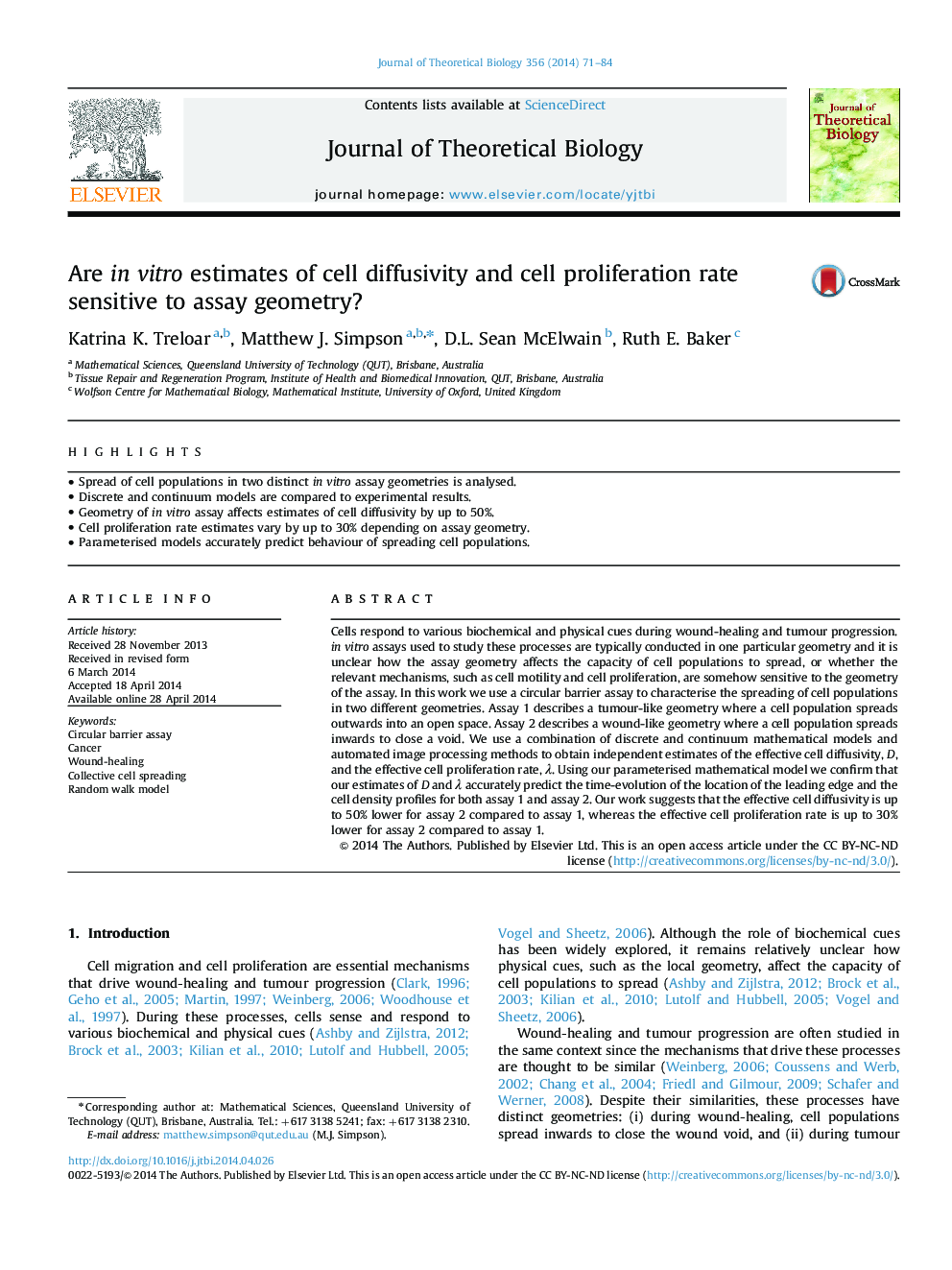| Article ID | Journal | Published Year | Pages | File Type |
|---|---|---|---|---|
| 6370409 | Journal of Theoretical Biology | 2014 | 14 Pages |
Abstract
Cells respond to various biochemical and physical cues during wound-healing and tumour progression. in vitro assays used to study these processes are typically conducted in one particular geometry and it is unclear how the assay geometry affects the capacity of cell populations to spread, or whether the relevant mechanisms, such as cell motility and cell proliferation, are somehow sensitive to the geometry of the assay. In this work we use a circular barrier assay to characterise the spreading of cell populations in two different geometries. Assay 1 describes a tumour-like geometry where a cell population spreads outwards into an open space. Assay 2 describes a wound-like geometry where a cell population spreads inwards to close a void. We use a combination of discrete and continuum mathematical models and automated image processing methods to obtain independent estimates of the effective cell diffusivity, D, and the effective cell proliferation rate, λ. Using our parameterised mathematical model we confirm that our estimates of D and λ accurately predict the time-evolution of the location of the leading edge and the cell density profiles for both assay 1 and assay 2. Our work suggests that the effective cell diffusivity is up to 50% lower for assay 2 compared to assay 1, whereas the effective cell proliferation rate is up to 30% lower for assay 2 compared to assay 1.
Keywords
Related Topics
Life Sciences
Agricultural and Biological Sciences
Agricultural and Biological Sciences (General)
Authors
Katrina K. Treloar, Matthew J. Simpson, D.L. Sean McElwain, Ruth E. Baker,
